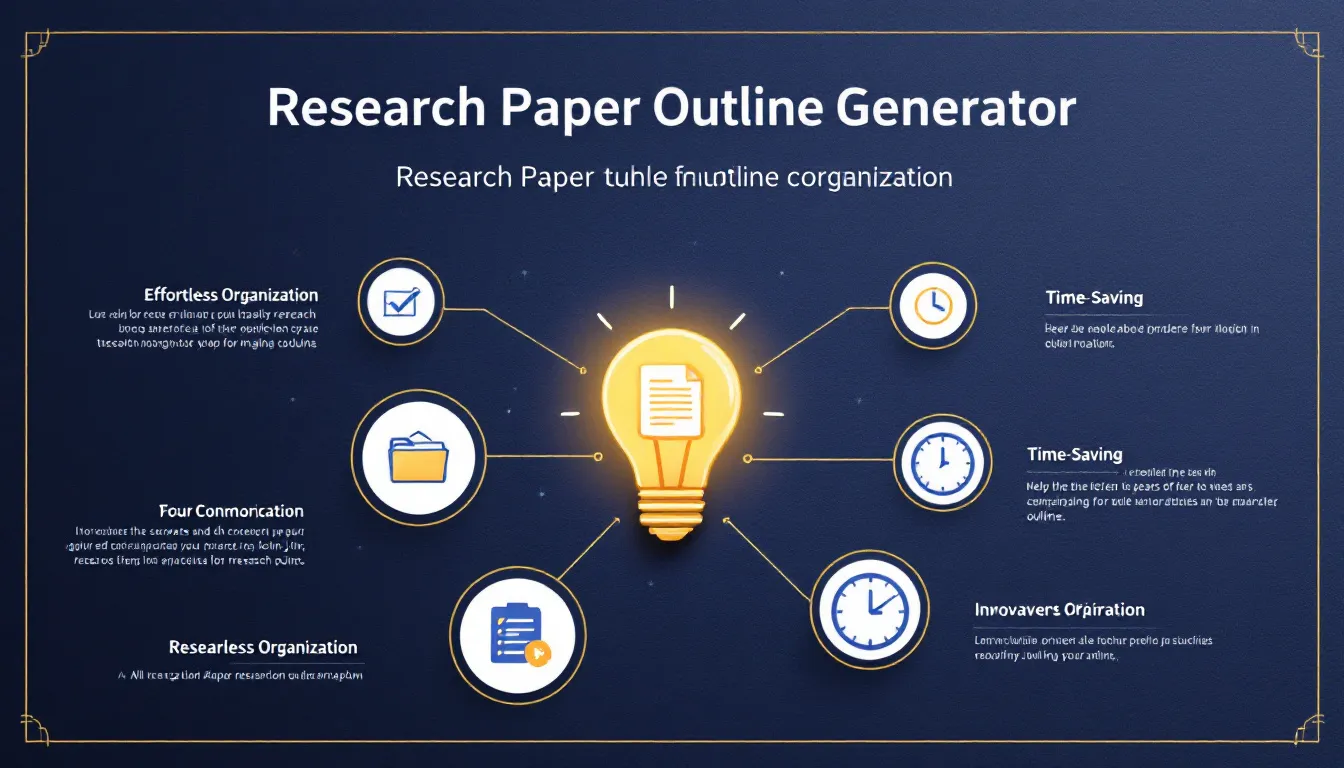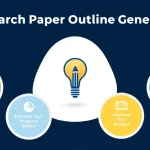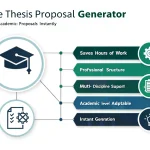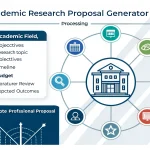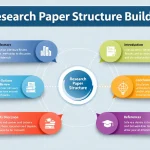Is this tool helpful?
How to Use the Research Paper Outline Generator Effectively
You can create a clear and tailored research paper outline in minutes by following these steps. This tool asks for key details about your study to generate a structured roadmap.
-
Enter the Research Topic: Provide the central theme of your paper. For example:
- “The effects of renewable energy adoption on national economies”
- “The role of microplastics in marine ecosystems”
-
Specify the Academic Field: Input the relevant discipline, such as:
- “Environmental Economics”
- “Marine Biology”
-
Define Research Objectives: Clearly describe the goals of your study. For instance:
- “To assess the economic impact of solar energy subsidies across European countries”
- “To examine the accumulation and ecological effects of microplastics on coral reefs”
-
List Key Terms (Optional): Add relevant keywords separated by commas, like:
- “solar power, subsidies, economic growth, policy analysis”
- “microplastics, coral reefs, pollution, marine conservation”
-
Specify Methodology Preference (Optional): Describe your preferred research method, for example:
- “Comparative case study using econometric models”
- “Field sampling combined with laboratory chemical analysis”
- Generate Your Outline: After completing the form, click the generate button to receive a structured research paper outline tailored to your inputs.
Once generated, review the outline carefully. You can use it as a foundation for drafting your paper, ensuring your work remains focused and well-organized.
Introduction to the Research Paper Outline Generator
The Research Paper Outline Generator is an easy-to-use tool that helps you build a detailed and organized framework for your academic paper quickly. It guides you in structuring your ideas, research goals, and methodology into an effective outline.
Designed for students, researchers, and academics, this tool saves you time by automating the outline creation process while ensuring your paper covers essential components like introduction, literature review, methodology, results, and discussion.
Key Benefits of Using the Outline Generator
- Time-efficient: Quickly generate a comprehensive structure, so you spend less time planning and more on writing.
- Custom-tailored: Receive an outline based on your research topic, academic field, and objectives for relevant and focused content.
- Organized research flow: Maintain logical progression from introduction to conclusion, enhancing clarity in your paper.
- Supports diverse disciplines: Adaptable for a wide range of academic fields and research methodologies.
- Improves focus: Keeps your research aligned with your goals, preventing unnecessary detours.
Practical Applications of the Research Paper Outline Generator
This tool fits various academic scenarios and research levels. Here are practical uses demonstrating its versatility:
1. Undergraduate Research Assignments
If you’re writing your first major research paper, the outline generator offers clear guidance. Suppose you study sociology and explore “The influence of remote work on urban social dynamics.” The tool can create an outline including:
- Introduction: Context of remote work and urban sociology
- Literature Review: Previous studies on remote work’s social impacts
- Methodology: Surveys and interviews with urban residents
- Results: Changes in social interactions and community engagement
- Discussion: Implications for urban planning and policy
- Conclusion: Summary and future research directions
2. Graduate Thesis Planning
Graduate students can use the generator to structure proposals or theses. For example, a graduate student in public health researching “Effects of dietary habits on adolescent obesity” might get a customized outline highlighting:
- Introduction: Scope and significance of adolescent obesity
- Background: Nutritional trends and health statistics
- Literature Review: Studies on diet and obesity correlations
- Methodology: Longitudinal dietary surveys and BMI measurements
- Results and Analysis: Statistical evaluation of diet patterns
- Discussion: Interpretation and public health recommendations
- Conclusion: Key findings and implications
3. Interdisciplinary Research Projects
When your work spans multiple disciplines, the outline generator helps unify your structure. Imagine researching “Blockchain technology’s impact on healthcare data security.” The outline might consist of:
- Introduction: Overview of blockchain and healthcare data challenges
- Background: Blockchain fundamentals and healthcare IT systems
- Literature Review: Existing security frameworks and blockchain applications
- Methodology: Case studies and security audits
- Results: Effectiveness in protecting patient information
- Discussion: Advantages, limitations, and future potential
- Conclusion: Summary and policy suggestions
How the Research Paper Outline Generator Enhances Academic Writing
Using a structured outline improves the quality and clarity of your research paper. Here’s how this tool supports your writing process:
1. Organizes Your Research Logically
It arranges your ideas and information so they build upon each other, allowing your readers to easily follow your argument and analysis.
2. Saves Time on Planning
Instead of starting with a blank page, you get a ready-made scaffold to fill in, helping you start writing faster and meet deadlines more comfortably.
3. Addresses Writer’s Block
When you feel stuck, the clear outline breaks down your paper into manageable parts, giving you a step-by-step path forward.
4. Supports Various Research Methodologies
Whether you conduct qualitative interviews, quantitative experiments, or mixed-methods studies, the tool adjusts the outline sections to fit your approach.
5. Ensures Comprehensive Coverage
The generator prompts you to consider all necessary paper components, reducing the chance of missing crucial sections like methodology or discussion.
Summary
Your research paper gains structure, clarity, and focus when you use the Research Paper Outline Generator. By entering your topic, field, and research objectives, you receive a tailored framework that guides your writing and keeps your study on track. This tool is a practical resource for students and academics across disciplines who want to streamline their research process and improve their academic writing quality.
Important Disclaimer
The calculations, results, and content provided by our tools are not guaranteed to be accurate, complete, or reliable. Users are responsible for verifying and interpreting the results. Our content and tools may contain errors, biases, or inconsistencies. Do not enter personal data, sensitive information, or personally identifiable information in our web forms or tools. Such data entry violates our terms of service and may result in unauthorized disclosure to third parties. We reserve the right to save inputs and outputs from our tools for the purposes of error debugging, bias identification, and performance improvement. External companies providing AI models used in our tools may also save and process data in accordance with their own policies. By using our tools, you consent to this data collection and processing. We reserve the right to limit the usage of our tools based on current usability factors.
